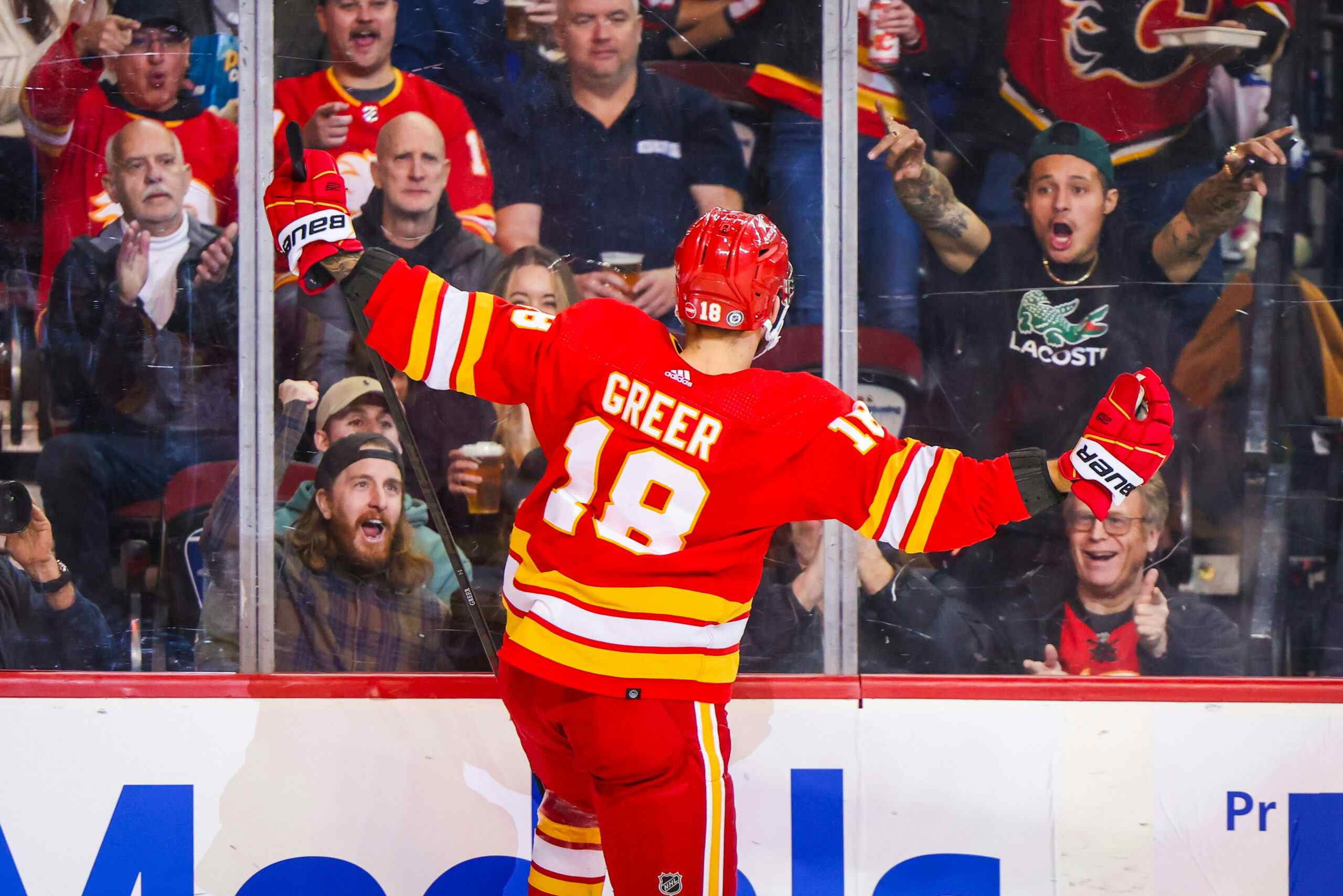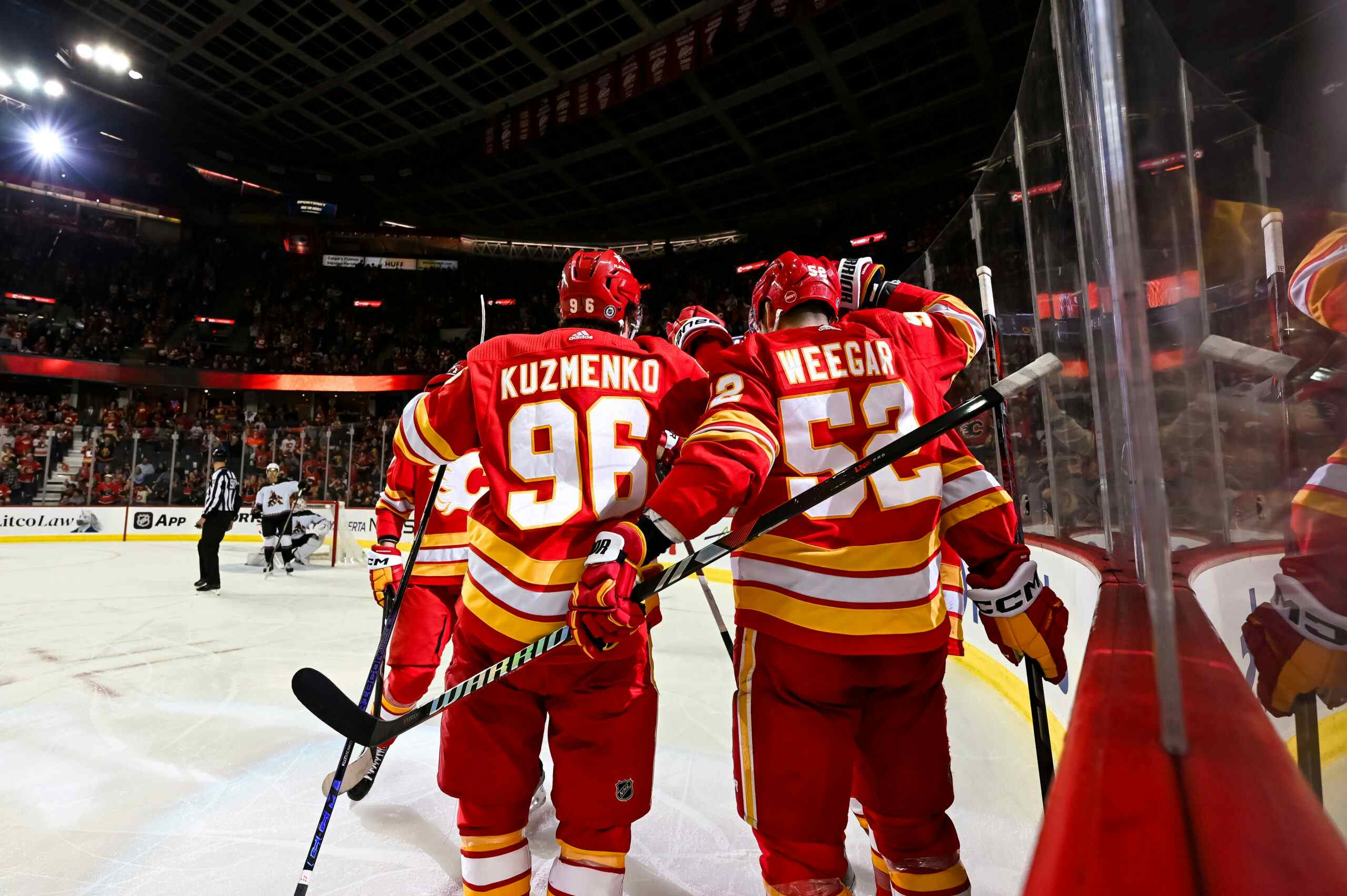FlamesNation Player Evaluation: Deryk Engelland
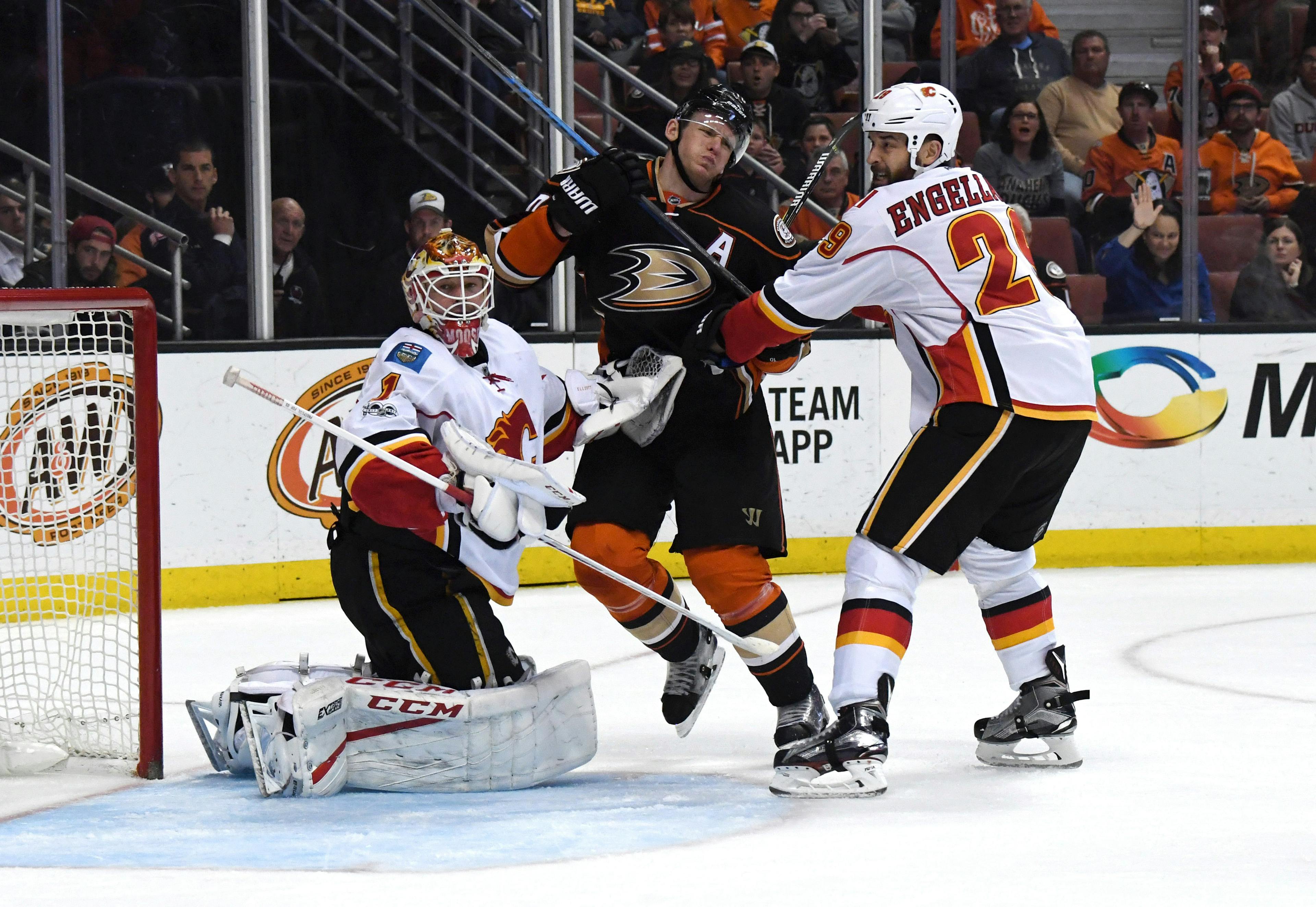
By Kent Wilson
6 years agoDeryk Engelland is a straightforward hockey player. He’s tough, he sticks up for his teammates, and he is an old-style defensive defenseman. Almost three years ago the Flames organization signed him to a giant raise due to those intangibles and there are many fans who would argue the club should re-sign him to retain those old-style qualities.
On the other hand, the math is not an Engelland fan. Though he tends to play against mostly third and fourth liners at even strength, Engelland consistently gets outshot and out-chanced on a nightly basis. At age 35, he’s also a good bet to see his performance step into an elevator shaft. That’s bad given he is, at best, a replacement-level NHLer by most measures at this point.
2016-17 summary
Like every Calgary blueliner outside the Flames’ top pairing of Dougie Hamilton and Mark Giordano, Deryk Engelland had to contend with a rotating cast of partners through most of the season. He spent time with every left-handed defender on the team, including Gio, T.J. Brodie, Matt Bartkowski, Jyrki Jokipakka, and youngster Brett Kulak.
Only one of those pairings managed to be above board. When Engelland wasn’t skating with Kulak, the Flames boasted a CF% of 47% or worse and a scoring chance (SCF%) ratio of 42% or less. That seems to be complimentary to Kulak (who definitely warrants a longer look at the NHL level) but we can surmise there was a significant circumstantial element to those results. For instance, Kulak and Engelland enjoyed the highest offensive zone start ratio of any of the pairings noted. I would imagine the coaching staff also made sure to keep them far away from other clubs’ best players as well.
The initial hope heading into the season was that Jokipakka would stabilize Engelland and give the Flames a steady, if unspectacular third pairing, but that didn’t really happen. They got beaten up to the tune of an expected goal ratio of 41% and it didn’t help that they spent a lot of time together when the Flames were struggling to win.
So along came Matt Bartkowski in the late-season shuffle that also saw Michael Stone join the team. Then the Flames went on their magical 11-game run, suggesting the club had finally found a worthwhile partner for Engelland on the third pairing.
Except that was an illusion. The duo finished the year with the same possession rate as Engelland/Jokipakka, but with even worse scoring chance and expected goal rates (around 38%). That’s… not good.
On-ice impact
As mentioned, Engelland is a guy who is liked by his teammates, his coaches, and conventional hockey men who value toughness and intangibles, but all the available evidence points the opposite direction. For instance, here’s the Flames’ shot chart with Engelland on the ice (via hockeyviz):
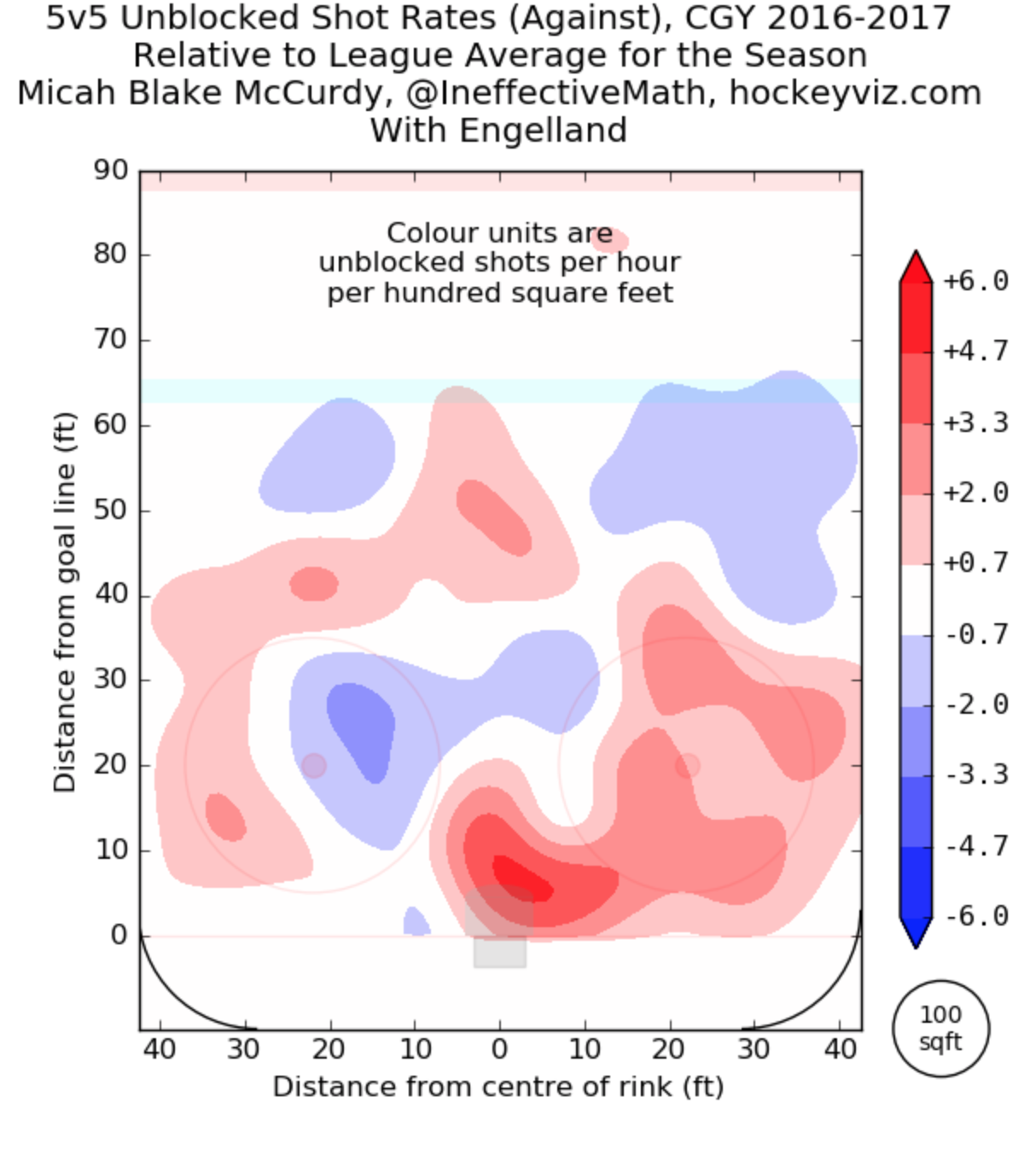
As you can see, Calgary gives up a much higher percentage of shots in the high slot and around the net with Engelland on the ice. In fact, the action is shifted to the right side of the ice – Engelland’s side.
Here’s his CF% running average from 2016-17:

There are some peaks and valleys, but Engelland never managed to break even. He improved in lockstep with the rest of the team when the calendar flipped in January, but while the Flames in general were one of the best CF% clubs in the final third of the season (around 52%), Engelland actually took a step back from a possession perspective in the final six weeks (roughly when Bartkowski arrived).
Engelland was trusted as one of the team’s top penalty killers, but again… his results weren’t too good. With Engelland on the ice, the Flames gave up the second most shot attempts against per hour (89), the most shots on net per hour (47.06), and had the highest total expected goals against (22.84) and expected goals against per hour (5.46) amongst regular blueliners on the team.
Most common linemates
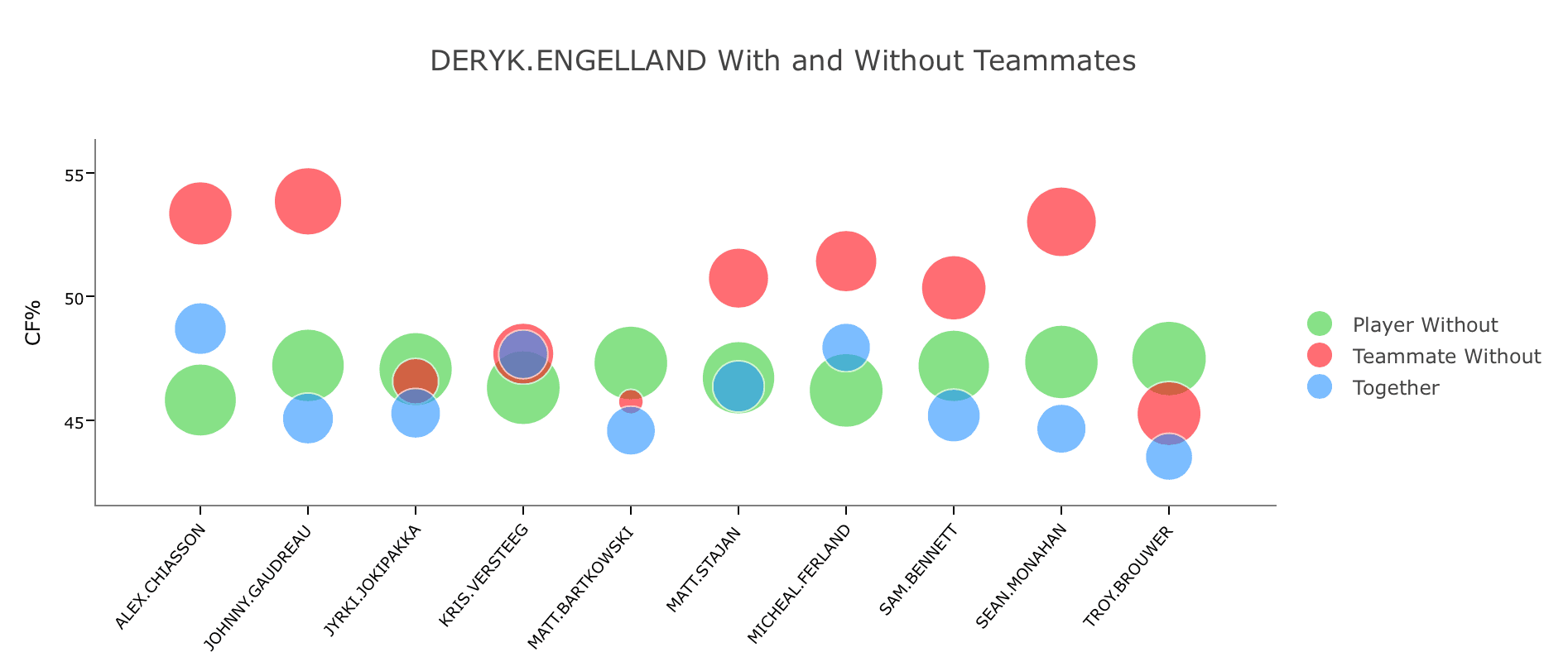
Because his defense partners bounced around so much, many of Engelland’s most frequent linemates were actually forwards. As you can see no player was better with Engelland than without him (aside from Versteeg, where there was no difference). The Flames’ top line players and Engelland were also a rather toxic mix, with everyone being much worse off when they played together than otherwise. Gaudreau and Monahan, for instance, saw a 10% swing in possession with and without Engelland.
What’s next?
This is an easy one. Engelland was signed for too much for too long three years ago as a bid to inject size, toughness, and veteran savvy onto a team that was young, inexperienced, and not overly big.
Engelland did everything that was asked of him during his tenure here, but at 35 years old and clearly in over his head on the ice, intangibles aren’t really enough to justify his presence on the roster anymore. Calgary is entering the next phase of their rebuild at this point and Engelland’s dollars and roster spot would be better spent on a youngster who can both contribute and improve.
| #1 – Brian Elliott | #5 – Mark Giordano |
| #6 – Dennis Wideman | #7 – T.J. Brodie |
| #10 – Kris Versteeg | #11 – Mikael Backlund |
| #13 – Johnny Gaudreau | #17 – Lance Bouma |
| #18 – Matt Stajan | #19 – Matthew Tkachuk |
| #23 – Sean Monahan | #25 – Freddie Hamilton |
| #26 – Michael Stone | #27 – Dougie Hamilton |
Recent articles from Kent Wilson


